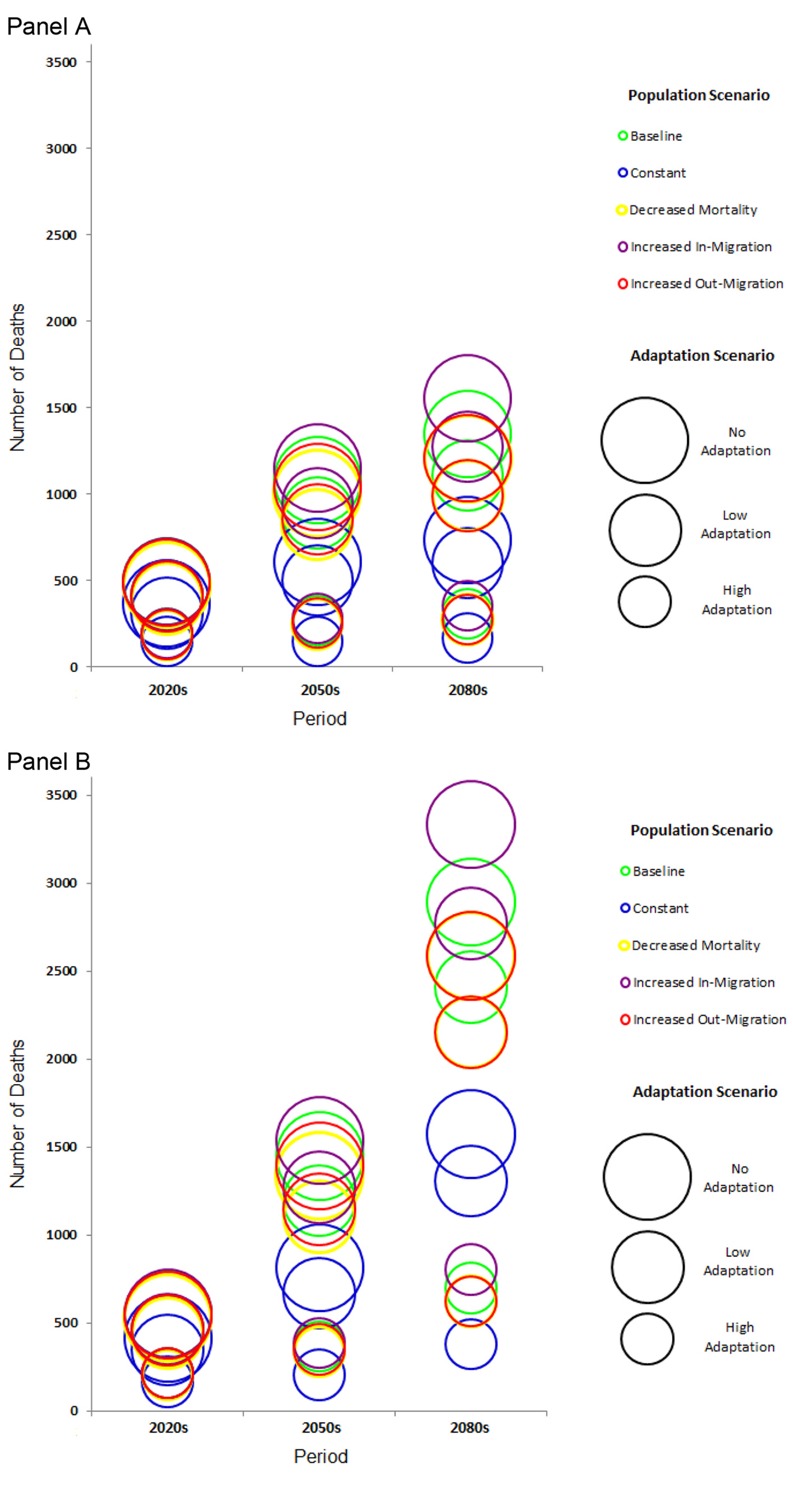Figure 3.

Median annual projected heat-related deaths in New York City according to two Representative Concentration Pathways (RCPs), (A) RCP4.5 and (B) RCP8.5, and across 33 global climate models (GCMs) during the 2020s (2010–2039), the 2050s (2040–2069), and the 2080s (2070–2099). The corresponding numeric data are provided in Table 2. Heat adaptation scenarios are indicated by circle size and include “high adaptation,”whereadaptation, as measured by the minimal relative risk for a given temperature to be reached by the year 2100 (RRmin), is projected to reach a value 80% lower than the RR calculated at each degree Celsius (°C) during the 2000s; “low adaptation,” where adaptation, as measured by RRmin, is projected to reach a value 20% lower than the RR calculated at each degree Celsius (°C) during the 2000s; and “no adaptation,” wherein future adaptation does not occur and adaptation, as measured by RRmin, remains the same as the RR calculated at each degree Celsius (°C) during the 2000s. Population scenarios are indicated by color and included “baseline,” which assumed that all parameters of the model remain constant; that is, age-specific fertility and mortality rates and age characteristics of migration are all kept constant, but the population ages forward; “decreased mortality,” which assumed a decrease in age-specific mortality rates such that the values reach 2/3 of the 2010 values by 2100; “increased in-migration,” which assumed that the growth of domestic in-migration (from other parts of the United States to New York City) will be half of the growth of the U.S. population and that the growth of international in-migration (from outside of the United States to New York City) will be half of the growth of the projected international in-migration nationwide; “increased out-migration,”which assumed that the rate of out-migration would increase by 25% over the projection period; and “constant,” which assumed that the population and the age of the population remain constant at 2010 levels. For reference, there were 638 heat-related deaths annually between 2000 and 2006.
